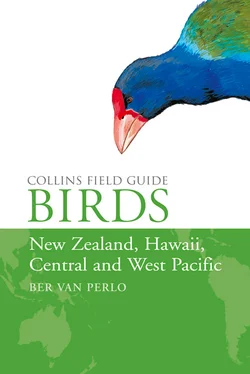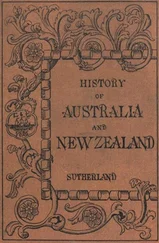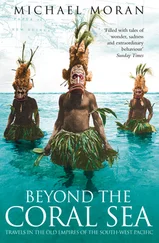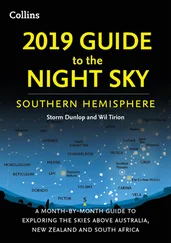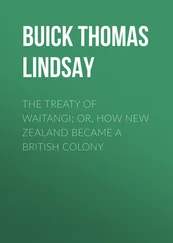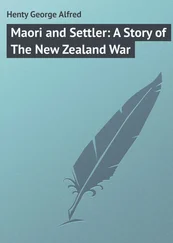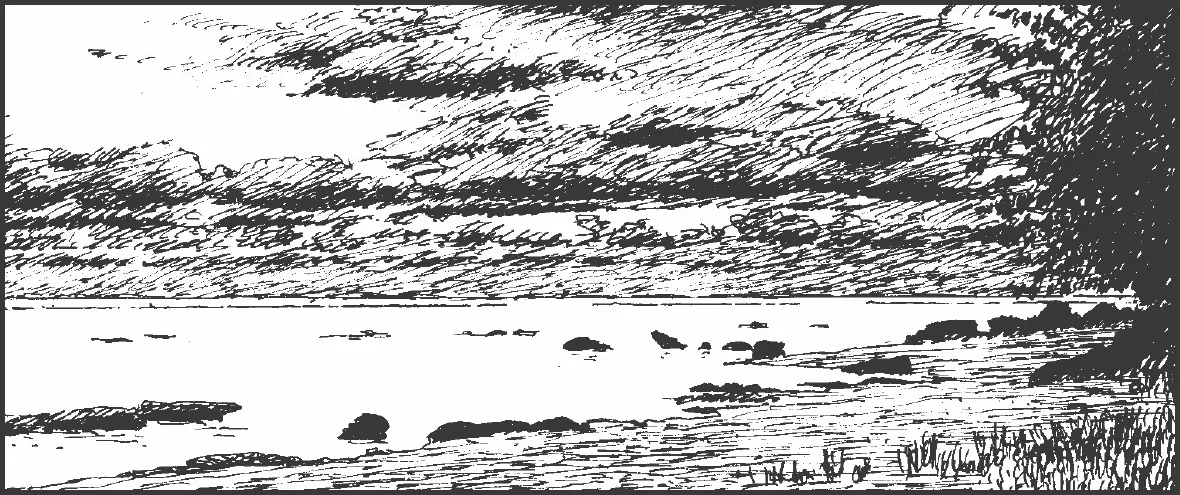
Farmland: food crops, fruit orchards, floriculture, vanilla, etc.
Savanna: low production grassland with some tree cover, many breadfruit shrubs and dominated by exotic grasses. Often replaces (dry) forest after repeated burning.
Grassland: areas dominated by grasses with little tree and shrub cover, also replacing former forest. Savanna and grassland in Pacific islands are normally the result of human activity.
Wetlands
Wetlands: rare freshwater habitat in the Pacific; most original wetland is drained and changed to crop- and grassland. Wetland bird species are now dependent on man-made ponds, reservoirs, sewage fields, etc.
Upland forest types
Production Forest: mainly Caribbean Pine or Eucalyptus plantations.
Upland Dry Forest: once covered about one-third of the lar-ger Fijian islands and also was common at the leeside of the Hawaiian islands; now greatly altered to savanna with sparse vegetation.
Montane Rainforest: various forest types united by high humidity and limited temperature variations. Exact timing of dry season varies. Characterised by epiphytes and mosses. This habitat has often disappeared from the smaller islands and the remains on larger islands are threatened.
Cloud Forest: the highest parts of rainforest, which are characterised by a high incidence of fog.
Secondary Forest: new natural forest where the original forest has disappeared. As a habitat it is highly variable, from low woodland to tall forest with more open canopy than virgin forests and lacking old emergent trees.
Other habitat types
Lava Plains and other bare ground at high altitudes: for some bird species this forms an important habitat (Hawaii Goose, Omao, Tahiti Petrel, White-tailed Tropicbird).
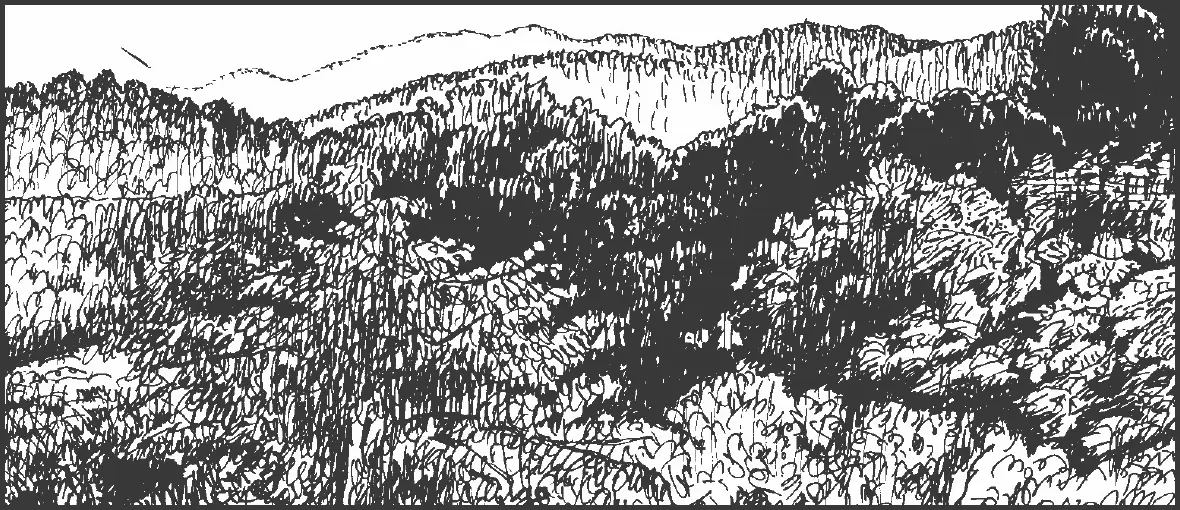
Some Basics for New Zealand
GEOLOGY The core of New Zealand was pushed, compressed and folded up against the Australian area some 370 million years ago. About 300 million years later (or 70 million years ago) New Zealand and Australia were separated along a rift that created the Tasman Sea. The rift ‘healed’ and 25 million years ago the eroded and flattened remains started to be uplifted again.
South Island is dominated by a row of Alps over the full western length. The subduction processes in the trenches north and south of South Island are contrary to each other, pressing the alpine area together. Along the main Alpine Fault both ‘Alp-halves’ are sliding along each other (the western ‘half’ moving faster north). Secondary faults are forming the highlands near Kaikoura. This is also the place where the deep Kermadec Trench brings cold, fish-rich water near the coast, attracting a host of seabirds.

North Island is dominated by volcanic activity. The Pacific Plate dives under the Australian Plate that carries the island. Where the plate sinks into the liquid-hot asthenosphere, magma is released and ‘floats’ to the surface forming an arc of volcanoes in the Taupo Volcanic Zone. In this zone and elsewhere there are several lakes in places where once large to very large magma chambers exploded (each one forming a ‘caldera’), after which the remains collapsed and were filled by rain water. It is also the zone where many hot springs are found; the water that surfaces here (often as steam) is heated deeper down in the earth’s crust. The volcanoes and calderas outside the Taupo Volcanic zone are mainly remnants of older volcanic arcs.
LAND USE AND VEGETATION TYPES Originally the greater part of New Zealand was covered by forest. After the arrival of the Polynesians (ad1000) and later on the settlement of the Europeans (from about ad1840) more than 50% of the forest was cleared, mainly by fire and grazing. Origin-ally there were no mammals in New Zealand except seals and three bat species, but when the first people arrived they introduced unwillingly or with full intent a wide range of animals, which started to compete with or to live on the native flora and fauna, driving many endemics to complete or near-extinction. The most dangerous intruders were black rats, mice, feral cats and possums. The latter not only eat eggs and nestlings of indigenous species but also the saplings and fresh shoots of indigenous trees and plants. The best places to see remaining endemics are a few islands and a single mainland sanctuary that have been made predator-free.
Before the arrival of the Europeans there were very few deciduous tree species, the 13m-high Tree Fuchsia (Fuchsia excorticata) among them.
The main habitats include the following:
Farmland, orchards, high producing grassland: together covering about 24% of the total land area.

Extensive grasslands: low vegetation, mainly with exotic and indigenous grasses. Livestock tend to be grazed over large areas. Some extensive grassland may have conservation or recreational uses.
Mosaic of different types of forest and farmland: among these is coastal forest, which is not very tall and is made up of plants that can tolerate salty winds. It generally lacks large conifers and has fewer vines and epiphytes. The canopy is dense and wind-shorn.
Lowland forest: resembles tropical rainforest, but is less rich in species. Found mainly in the northern half of North Island. A typical species is Kauri, a gigantic conifer with small oval leaves. Further south other tall species such as Southern Beech dominate. In most places all or most tall trees have been felled.

Upland forest: dominated by Southern Beech. Undergrowth less dense than in lowland forest. Before the introduction of possum, deer and goat, was rich in berry-producing shrubs.
Planted forest: mainly pine species, but also eucalyptus. Often with rich undergrowth of native plants. Covers about 7% of total land area.
Lakes: the lakes of South Island are drowned glacier valleys, those of North Island are mainly water-filled calderas (collapsed magma chambers).
Note: most natural inland wetlands of New Zealand have been drained for agriculture.
The Birds
Island Avifauna
The area covered by this book is characterised by its immense water surface, its countless small islands and the often enormous distances between them. This makes the avifauna typically island in character.
Of the 125, worldwide recognised true seabirds (albatross and petrels), 87 (or 70%) occur in the area.
As a result of the islands never having been connected to other land masses, the birds that are present have arrived on their own wings or with sea currents, by evolution or by human introduction (Polynesians and Europeans). About 70 species (9%) have been introduced, at least 201 species (25%) are endemic, so about 510 species came unsupported from elsewhere.
Before the arrival of humans there were no mammals in the area, except seals, bats and fruit-bats. There were not many birds of prey either. Many bird species could therefore afford to lose the ability to fly; 12 flightless species (excluding penguins) can still be found, namely five kiwis (all species), three rails (Weka, Takaha and Henderson Island Crake), three ducks (Auckland Duck, Auckland Teal and Campbell Teal) and one parrot (Kakapo).
Читать дальше
